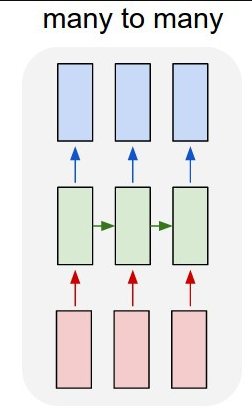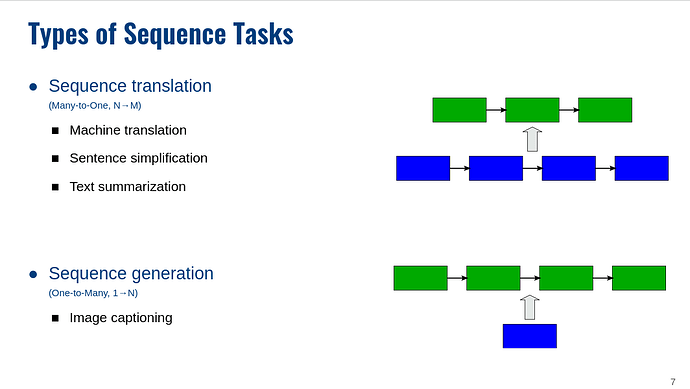Hi, I am very new to RNN and LSTM networks. I have tried implementing some of the One to Many models with RNN and LSTM and trying to implement a Many to Many LSTM network like in this picture

but most tutorials are many to one or if it is Many to Many it gonna a tutorial for NLP which is very different from what I am expecting. Can anyone give me an example of this?
And also I found this code from the internet about using LSTM in time series tasks.
class LSTM(nn.Module):
def __init__(self, hidden_layers=64):
super(LSTM, self).__init__()
self.hidden_layers = hidden_layers
# lstm1, lstm2, linear are all layers in the network
self.lstm1 = nn.LSTMCell(1, self.hidden_layers)
self.lstm2 = nn.LSTMCell(self.hidden_layers, self.hidden_layers)
self.linear = nn.Linear(self.hidden_layers, 1)
def forward(self, y, future_preds=0):
outputs, num_samples = [], y.size(0)
h_t = torch.zeros(n_samples, self.hidden_layers, dtype=torch.float32)
c_t = torch.zeros(n_samples, self.hidden_layers, dtype=torch.float32)
h_t2 = torch.zeros(n_samples, self.hidden_layers, dtype=torch.float32)
c_t2 = torch.zeros(n_samples, self.hidden_layers, dtype=torch.float32)
for time_step in y.split(1, dim=1):
# N, 1
h_t, c_t = self.lstm1(input_t, (h_t, c_t)) # initial hidden and cell states
h_t2, c_t2 = self.lstm2(h_t, (h_t2, c_t2)) # new hidden and cell states
output = self.linear(h_t2) # output from the last FC layer
outputs.append(output)
for i in range(future_preds):
# this only generates future predictions if we pass in future_preds>0
# mirrors the code above, using last output/prediction as input
h_t, c_t = self.lstm1(output, (h_t, c_t))
h_t2, c_t2 = self.lstm2(h_t, (h_t2, c_t2))
output = self.linear(h_t2)
outputs.append(output)
# transform list to tensor
outputs = torch.cat(outputs, dim=1)
return outputs
Does this code do the Many to Many tasks like in the first pictures and why in the code there are 2 LSTM layers (lstm1 and lstm2) Thank you.

